Biological Fly Control: An In-Depth Exploration
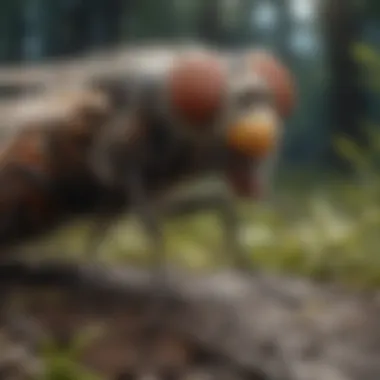
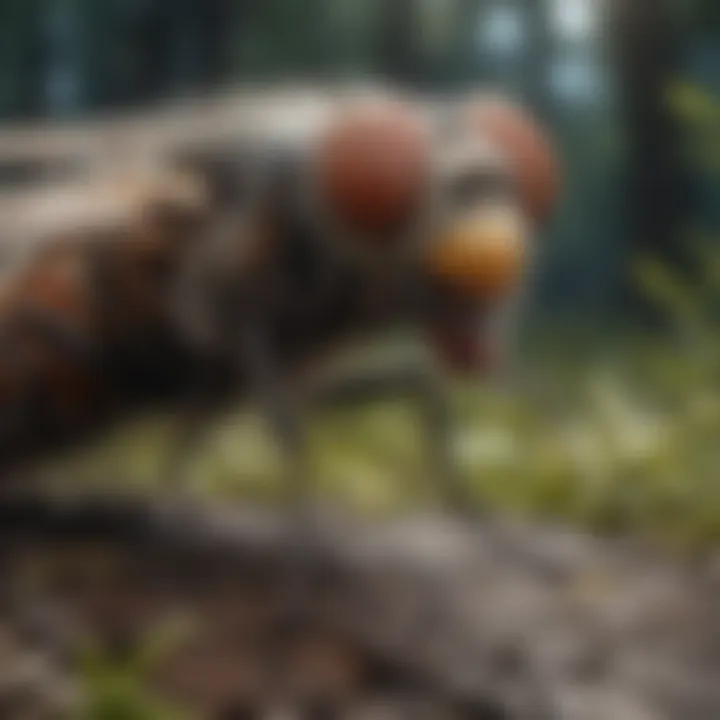
Intro
Understanding how to manage fly populations is a pressing concern for many homeowners and gardeners. Flies can be not only a nuisance but also carriers of diseases. This article aims to uncover the complexities of biological fly control. By exploring different ecological methods, we aim to equip readers with knowledge for effective pest management. This fits well into both agricultural practices and urban living, where the balance of the ecosystem is vital.
Understanding Pests
Pests are organisms that can cause harm to our food, health, and environment. While flies may seem insignificant, their role in spreading diseases makes them a noteworthy group.
Definition of Pests
In biological terms, pests are any species considered detrimental to human interests. Flies, like houseflies and fruit flies, not only invade spaces but also compromise hygiene.
Importance of Pest Identification
Identifying the type of pest is essential for effective control strategies. Different methods may work for different flies. Recognizing the specific fly species involved allows for targeted biological interventions. This can lead to more efficient and natural management techniques.
Prevention Techniques
Preventing flies is easier than controlling them once they have established. Homeowners can implement various strategies to keep these pests at bay.
Home and Garden Preventative Measures
- Sanitation: Regular cleaning of kitchen surfaces and garbage disposal can significantly hinder fly populations.
- Sealing Entry Points: Ensure that windows and doors are fitted with screens. Close any gaps where flies might enter.
- Natural Traps: Consider placing bowls of vinegar or wine around the house to attract and trap flies naturally.
Seasonal Prevention Tips
Understanding seasonal behavior of flies helps in implementing relevant prevention techniques:
- In spring, flies often emerge from overwintering, so a thorough spring cleaning can help.
- During warmer months, monitor ripe fruits and vegetables, as they can become breeding grounds.
Eco-Friendly Pest Control Solutions
Utilizing sustainable practices for pest management is crucial. It not only preserves the environment but can be effective in long-term management of fly populations.
Overview of Sustainable Practices
Sustainable pest control focuses on using ecological methods. This includes integrating biological control with chemical methods when necessary. The ultimate goal is to maintain ecological integrity.
Natural Remedies and Their Effectiveness
Natural remedies can provide effective solutions against flies:
- Essential Oils: Oils from plants like lavender and peppermint can deter flies.
- Beneficial Insects: Introducing insects like ladybugs may indirectly suppress fly populations.
- Microbial Control: Certain bacteria can target the lifecycle of flies effectively, disrupting their development.
"Biological control methods showcase how nature offers solutions to human challenges, maintaining ecological balance."
The techniques discussed form a solid foundation for understanding biological fly control. Integrating these methods will foster better living conditions for homeowners and a healthier environment.
Prolusion to Biological Fly Control
The topic of biological fly control is increasingly significant as we seek to reconcile pest management with ecological principles. This approach prioritizes the use of natural enemies to regulate fly populations. Moreover, it addresses environmental concerns associated with chemical pesticides. Understanding biological control methods can lead to sustainable practices that benefit both homeowners and the ecosystem.
Defining Biological Control
Biological control, in simple terms, involves using living organisms to suppress pest populations. This could include the introduction of predators, parasites, or pathogens that are naturally found in the environment. The aim is to create a balance, reducing excessive fly populations while minimizing harm to other species. The main advantage of biological control is its long-term effectiveness. Unlike chemical pesticides, which can lead to resistance, biological agents can adapt and thrive alongside their prey. This makes biological fly control not only effective but also a more sustainable choice.
Historical Overview of Fly Control
The history of fly control reflects a growing understanding of ecology and pests over time. Traditionally, chemical controls dominated pest management strategies. However, the negative side effects of these chemicals became clear, leading to questions about safety and effectiveness. Environmental activists and scientists pushed for more eco-friendly alternatives. As a result, biological control gained traction in the mid-20th century. Regulatory bodies started to support research into natural methods, paving the way for innovations in pest management.
"As we moved from reliance on chemicals to biological methods, it became clear that maintaining ecological balance is crucial for sustainable living."
The shift towards biological control reflects a changing mindset about our relationship with pests. Today, homeowners are more aware of the impacts of their choices on the environment. This shift has implications for future pest management techniques and the overall health of our living spaces. Integrating biological approaches not only aids in fly control but also strengthens biodiversity, promoting a healthier ecosystem.
Types of Fly Species Targeted
Understanding the specific types of fly species targeted in biological control is crucial for effective pest management strategies. Each species of fly plays a unique role in environments, and their impact can vary significantly based on their behavior and biology. Targeting the right species not only optimizes control efforts but also enhances ecological balance. This section will explore the common species of flies that are problematic in various settings, along with a discussion on their life cycles.
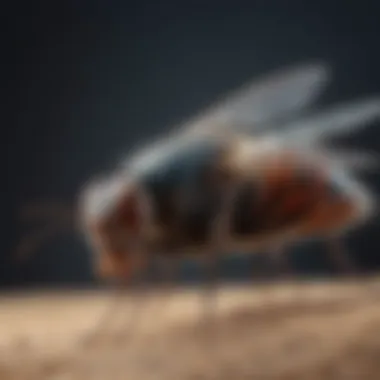
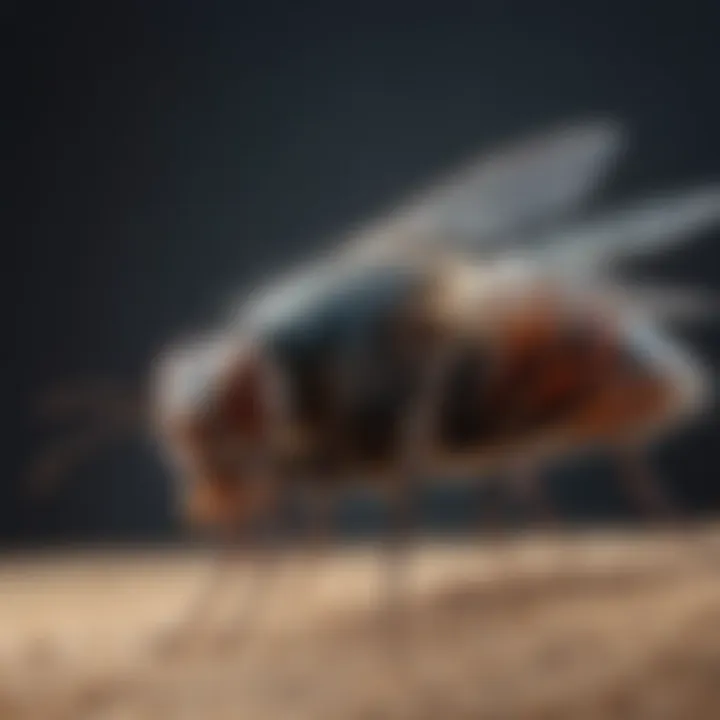
Common Species and Their Impact
Several fly species are notorious for being pests in both urban and agricultural environments. For instance, Musca domestica, commonly known as the house fly, is prevalent in homes and farms alike. They do not only annoy humans but also pose health risks as they can carry pathogens that lead to diseases. Another significant species is the Calliphora vomitoria, or the bluebottle fly, which is often associated with decaying organic matter. Their presence indicates potential hygiene issues.
The impact of these flies extends beyond mere annoyance. Flies like the Drosophila melanogaster, known as the fruit fly, can quickly infest homes and markets, leading to severe economic losses. Their rapid breeding can overwhelm a space if not managed immediately. Additionally, conditions that promote their development, such as waste accumulation, must be addressed to reduce their populations effectively.
- House flies can transmit diseases like E. coli and Salmonella.
- Bluebottle flies are beneficial in forensic science for detecting the time of death in cadavers.
- Fruit flies are often used in genetic studies but can severely impact food storage if uncontrolled.
Effective biological control methods thus require understanding the specific behaviors and life cycles of these troublesome species.
Life Cycles of Flies
The life cycle of flies varies by species but generally includes four distinct stages: egg, larva, pupa, and adult. Knowing these stages is essential for targeting control measures. For instance, house flies lay eggs in moist materials rich in decaying organic matter, such as garbage or animal waste. The larvae, or maggots, feed voraciously during their development, which typically lasts about a week.
As they mature, they enter the pupal stage, where they undergo metamorphosis. In this case, it is critical to attack the larvae or puparia when possible, as this can significantly limit the adult fly population.
A few key points about fly life cycles include:
- Rapid Reproduction: Flies can reproduce quickly, with a house fly producing up to 500 eggs in a few days.
- Lifecycle Duration: The entire life cycle can be completed in as little as 7 to 10 days under optimal conditions.
- Environmental Factors: Temperature and humidity influence the speed of development, which varies by species.
Understanding the life cycles of flies helps to time biological control interventions effectively.
In summary, focusing on common fly species and their life cycles is imperative in the context of biological control. Effective strategies can minimize the detrimental effects of flies on public health and agriculture, making it a compelling area of study.
Natural Predators of Flies
The exploration of natural predators of flies is crucial in understanding biological fly control. Natural predators refer to organisms that hunt and consume flies, thereby helping to regulate their populations. This relationship in the ecosystem fosters an ecological balance, reduces reliance on chemical pesticides, and promotes sustainable practices. By harnessing these natural mechanisms, we can establish more effective and environmentally friendly methods of pest management.
Identification of Key Predators
Identifying key predators is the first step in implementing biological control strategies. Several important taxa serve as predators of flies:
- Birds: Many bird species, including swallows and sparrows, consume flies in large numbers. Their ability to cover vast areas makes them effective at controlling fly populations.
- Bats: Bats offer significant predation on flies during nocturnal activities. A single bat can consume thousands of insects in one night, highlighting their role in regulating populations.
- Araneae (Spiders): Certain spiders create webs in strategic locations to trap flies. Spiders can substantially reduce flies in gardens and homes.
- Predatory Insects: Several insects, like Ladybugs and Praying Mantises, prey on different life stages of flies.
It is important to carry out thorough assessments to determine which predators are most prevalent in specific settings, particularly in urban and agricultural environments.
Case Studies on Predation Rates
Case studies offer insightful perspectives on the effectiveness of natural predators in managing fly populations. Research conducted in various agricultural regions illustrates fascinating results. For instance:
- In a study on conventional farms using birdhouses, researchers noted a 30% reduction in fly populations. This suggests that providing habitats for birds can enhance their predatory function.
"Natural predators are not just beneficial; they are essential for an effective ecological approach to pest management."
- Another study focusing on bat populations showed that in regions where bat houses were installed, researchers measured effective fly control when bat numbers increased, showing a 50% decrease in fly larvae in nearby waste areas.
Integrating these findings can lead to better tactics in fly management. It relies on understanding local predator dynamics and fostering conducive environments for them. In summary, identifying and studying natural predators can inform strategies that minimize chemical reliance while maximizing ecological benefits.
Parasites and Pathogens in Biological Control
The role of parasites and pathogens in biological control is critical for managing fly populations. These organisms contribute significantly to the natural regulation of pests. Employing these agents can provide a sustainable alternative to chemical interventions. Understanding how parasites and pathogens influence fly control can help develop effective management strategies while also observing ecological principles.
Types of Parasites Affecting Flies
Parasites affecting flies can be classified into several categories. These include:
- Endoparasites: These organisms live inside their host, which in this case, are various fly species. Common examples are certain types of wasps that lay their eggs inside the fly larvae. This approach not only reduces fly populations but can also disrupt their life cycle.
- Ectoparasites: These live on the surface of the fly, feeding on blood or other body fluids. A well-known ectoparasite is the háematophagous (blood-feeding) fly that can cause significant harm to their hosts.
- Microbial Parasites: These include various fungi and bacteria that infect flies. For instance, the fungi Entomophthora and Beauveria species are known for their effectiveness in controlling fly populations by inducing diseases.
Each of these parasites plays a unique role in ecological equilibrium, often targeting specific fly species, thereby preserving the broader ecosystem. Their intrinsic behaviors represent nature's way of maintaining a balance.
Role of Pathogens in Fly Population Management
Pathogens serve as formidable agents in the control of fly populations. Viruses, bacteria, and fungi can infiltrate hosts and cause diseases that lead to population declines. By leveraging pathogens, pest managers can work towards:
- Controlling Adult Populations: Pathogens can be highly effective in infecting adult flies, often resulting in mortality before they can reproduce.
- Targeting Larval Stages: Specific microbial agents can be applied to eliminate larvae in manure or waste, significantly reducing future adult populations.
- Eco-friendliness: Using specific pathogens is safer for the environment compared to traditional chemicals, promoting biodiversity.
"Pathogens are one of the most effective forms of biological control because they can be targeted to specific pests without impacting non-target species."
Employing pathogens requires careful consideration of application methods. Factors such as timing, target species, and environmental conditions must be evaluated to achieve maximum efficacy without unintended consequences.


Ecological Principles in Fly Control
Understanding ecological principles is crucial in biological fly control. The interactions within ecosystems create a balance that can either suppress or encourage fly populations. A multifaceted approach not only addresses the immediate problem of flies but also enhances the health of the entire ecosystem.
Ecological principles emphasize the importance of maintaining or restoring natural habitats. These habitats support a variety of organisms that may predate on flies or compete with them for resources. For instance, implementing vegetation in gardens or farms can attract natural predators such as birds and beneficial insects, which helps in reducing fly populations naturally.
Furthermore, recognizing the roles that various organisms play in an ecosystem allows us to use biological control methods more effectively. With a deeper insight into these dynamics, one can better strategize pest management efforts, making them far less reliant on chemical pesticides that can disrupt this balance.
Ecosystem Interactions and Balance
Ecosystem interactions establish a network of relationships. Each organism, from predators to parasites, contributes to this complexity. Flies, as part of food webs, interact with both their environment and other species. Natural predators, like certain birds and insects, can keep fly numbers in check. Additionally, parasites can target specific fly species, helping manage their populations.
In healthy ecosystems, the presence of diverse species can mean fewer flies. A well-balanced ecosystem supports a greater number of natural enemies. By encouraging these predators, we can foster a self-regulating system that minimizes fly infestations.
It's essential to also consider human activities that interrupt these natural interactions. Practices such as monoculture farming or the use of pesticides can diminish biodiversity, leading to an increase in pests like flies. That's why sustainable practices are critical in fostering a balanced ecosystem.
Impact of Biodiversity on Fly Populations
Biodiversity serves as a buffer against pest invasions, including flies. A diverse ecosystem can create habitats that are less favorable for pest species. Different plants may attract various insects, some of which can prey on flies or compete for food resources.
For instance, certain plants can produce compounds that repel flies. By increasing plant diversity in gardens or agricultural fields, one can diminish the likelihood of a fly population explosion. Moreover, a varied array of beneficial insect species can help maintain lower fly populations, contributing positively to pest management practices.
"Biodiversity fosters resilience in ecosystems, another key factor in managing pest populations effectively."
An increase in biodiversity usually means a wider range of predators, which can target various stages of the fly life cycle. This interplay indicates that supporting various life forms is not simply beneficial but essential for efficient fly control. Emphasizing biodiversity is, therefore, a fundamental aspect of long-term ecological balance.
Sustainable Practices in Biological Control
Sustainable practices in biological control emphasize an ecological approach that reduces dependency on harsh chemicals while promoting a healthier environment. This area is essential because of the increasing need for effective pest management strategies that fit within the broader context of sustainability. In the face of rising ecological concern, it becomes critical to explore sustainable methodologies in pest management which maintain not just effectiveness but also ecological balance.
Integration with Conventional Pest Management
Integrating biological control methods with conventional pest management creates a synergistic effect that minimizes the drawbacks associated with each approach. Utilizing natural predators or parasites in conjunction with traditional pesticides can lessen the reliance on chemical solutions. For example, introducing beneficial insects such as ladybugs can help manage aphid populations while allowing for a reduction in the amount of pesticide applied.
This integration can take many forms, such as:
- Timing applications: Applying biological controls at specific life stages of pests, which can enhance effectiveness while reducing chemical exposure.
- Monitoring and assessment: Regularly checking the effectiveness of integrated approaches ensures that interventions are adjusted as needed, maintaining a healthy balance.
- Education: Teaching householders about the benefits and methods of integrating these systems can foster community support for sustainable practices.
Through proper training and access to resources, many house owners can become adept at integrating these strategies, effectively addressing pest problems while promoting ecological health.
Long-term Benefits of Biological Control
The long-term advantages of biological control extend beyond immediate pest reduction. By fostering a rich tapestry of natural interactions, these practices contribute significantly to an ecosystem's resilience. Some of the most notable benefits include:
- Maintenance of Biodiversity: By incorporating biological controls, natural ecosystems remain intact. Biodiversity supports healthier environments that can withstand pests and diseases more effectively.
- Reduced Environmental Impact: By minimizing the use of synthetic chemicals, biological control protects water quality and soil health, resulting in less runoff and pollution.
- Cost-effectiveness: Over time, biological control methods can be more economical compared to continuous applications of chemical pesticides, which can be both costly and harmful.
"Sustainable agricultural practices are a path to a resilient future, ensuring healthy ecosystems for generations to come."
Encouraging a mindset focused on sustainable practices in biological control not only addresses pest problems more effectively, but it also aligns with the values and concerns of modern households. Embracing these strategies can lead to healthier homes, gardens, and communities.
Challenges in Implementing Biological Controls
Implementing biological controls to manage fly populations presents unique challenges. Understanding these challenges is essential to evaluate the effectiveness and practicality of biological methods. The two primary concerns include resistance to biological control agents and economic limitations in their adoption.
Resistance to Biological Control Agents
Resistance in biological control agents occurs when target pest populations, such as certain fly species, develop the ability to survive or thrive despite the presence of these natural control methods. This phenomenon parallels the way insects can become resistant to chemical pesticides. Resistance may arise due to several factors, including genetic variation among fly populations that enables some individuals to survive treatment.
Several studies have indicated that such resistance can lead to diminishing returns in the effectiveness of biological control efforts. When flies become resistant, it can necessitate the use of higher doses or alternative agents, which may not be sustainable over the long term. Additionally, reliance on specific biological agents, like parasitic wasps or certain nematodes, could reduce biodiversity if these agents themselves become less effective.
"Employing a diverse range of biological control agents can mitigate the risk of resistance, fostering a more resilient pest management strategy."
Economic Limitations in Adoption
Economic constraints play a critical role in the adoption of biological control methods. Many house owners and agricultural producers face financial challenges when considering the shift from traditional synthetic pesticides to biological methods. The upfront costs for sourcing and implementing biological agents can be higher than expected, primarily due to the need for research, development, and procurement.
Moreover, the timeframe for visible results with biological control can be longer than that of chemical approaches. This delay in outcomes can make stakeholders hesitant to invest in what seems to be an uncertain solution. Factors like accessibility to reliable suppliers and training resources for effective implementation can also influence cost-effectiveness.
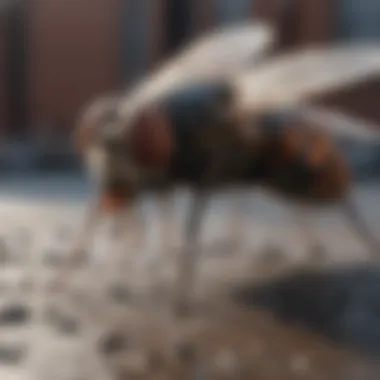
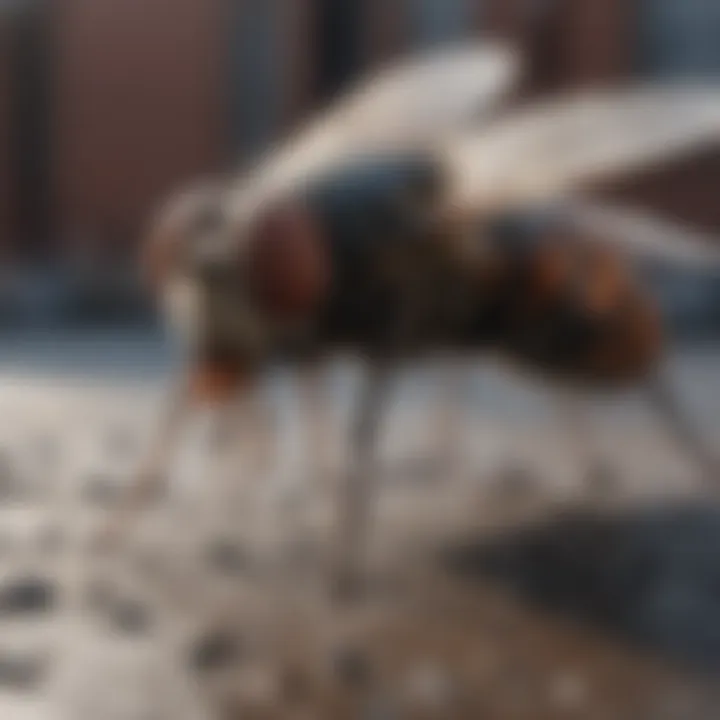
Consequently, financial barriers could lead to a preference for familiar pesticide methods, potentially stunting the development of biological control alternatives. Addressing economic limitations requires creating awareness among house owners about the long-term benefits of biological control practices.
Regulatory Framework for Biological Control
The effective application of biological control methods hinges significantly on robust regulatory frameworks. These frameworks ensure that the use of natural agents for controlling pest populations is both safe and effective. They also serve to protect biodiversity while promoting sustainable agricultural practices. Regulatory systems must balance the need for pest management with the potential impacts on ecosystems and human health.
Benefits of a Strong Regulatory Framework
A well-designed regulatory system offers several advantages:
- Safety Assurance: It evaluates the risks associated with introducing biological control agents. By doing so, it minimizes potential adverse effects on non-target species and the environment.
- Consistency in Application: Regulations provide guidelines on how to implement biological control measures uniformly. This consistency results in more reliable outcomes across different settings.
- Encouragement of Research: A clear regulatory structure supports ongoing research in biological pest control. Researchers can better align their efforts with legal standards, which can lead to more effective solutions.
Considerations for Implementation
In order to establish a regulatory framework that effectively governs biological control, certain considerations should be taken into account. These include:
- Stakeholder Involvement: Engaging farmers, researchers, and community members is crucial. Their insights on practical needs can guide the formulation of efficient regulations.
- Monitoring and Evaluation: Continuous assessment of the effectiveness and impacts of biological control methods is necessary. This evaluation can inform future regulations and practices.
- Adaptability: Regulations must be flexible enough to adapt to new research findings and technological advancements. This adaptability ensures that regulatory frameworks remain relevant and effective over time.
"Effective regulation is crucial to ensure that biological control methods are used properly, minimizing risks while maximizing benefits."
Global Standards and Guidelines
Global standards for biological control emphasize the importance of harmonizing practices to ensure safety and efficacy. Various international organizations, such as the Food and Agriculture Organization (FAO) and the World Health Organization (WHO), have developed guidelines that inform national policies. These guidelines cover multiple aspects including:
- Assessment of Biological Control Agents: Protocols are provided for evaluating the safety and effectiveness of potential agents before their release.
- Documentation and Reporting: Guidelines advocate for documenting the application of biological control methods, facilitating transparency and accountability.
- Training Programs: Many global standards include educational components aimed at training stakeholders on best practices regarding biological control.
These guidelines create an essential basis for countries to develop their own policies while ensuring the compatibility of biological control efforts across borders.
Case Examples of Regulatory Approaches
Different regions illustrate how diverse regulatory approaches can impact biological control initiatives. For instance, in the European Union, stringent regulations guide the introduction of biological agents. Each agent undergoes rigorous assessment to determine any potential hazards it may pose to local ecosystems.
Another notable example can be found in the United States where the Environmental Protection Agency (EPA) oversees the national regulatory framework for biological control agents. This involves a detailed risk assessment process, ensuring that only those agents that meet certain safety thresholds are utilized.
In contrast, some developing countries may have less formalized regulations regarding biological control. While this can speed up the process of introducing new agents, it also poses risks. Lack of oversight can lead to unintended consequences, such as harm to non-target species. Thus, the diversity of regulatory approaches highlights the need for tailored frameworks that take local contexts into account.
Future Directions in Biological Fly Control
Exploring future directions in biological fly control is critical for sustaining effective pest management strategies. As global populations grow and agricultural pressures increase, finding innovative ways to mitigate fly infestations becomes necessary. Understanding new research and technological advancements can significantly enhance the efficacy of biological control measures while ensuring environmental sustainability.
Emerging Research Trends
Current research is delving into the genetics of fly populations. Scientists are looking at the genetic makeup of flies to identify vulnerabilities. This genetic insight can lead to the development of targeted control methods. For example, altering specific genes may inhibit reproduction or survival rates of pest species.
Field studies are also investigating the impact of climatic factors on fly populations. Changing climates can affect the life cycles of flies, potentially expanding their range and impact. Researchers are assessing how shifts in temperature and precipitation influence breeding patterns. This understanding can help predict future outbreaks and inform management practices accordingly.
In addition, studies on the behavior of natural predators are becoming more prevalent. Understanding what attracts predators, such as specific scents or environmental conditions, can improve strategies for incorporating them into pest management.
"Innovation in biological control research is key to ensuring that we can manage pest populations in sustainable ways."
Technological Innovations for Efficacy
Advancements in technology offer promising avenues for improving biological fly control effectiveness. Remote sensing technology can allow for real-time monitoring of fly populations. By employing drones or satellite imagery, landowners can identify infested areas quickly and efficiently. This data-driven approach enables targeted application of biological control agents.
Additionally, the use of automated systems can streamline the release of biological agents. For instance, automated traps can be equipped with specific lures. These trap designs can attract and capture flies while simultaneously introducing natural predators. This integration of technology may allow for more efficient management of fly populations in both agricultural and urban settings.
Moreover, mobile applications provide valuable resources for farmers and homeowners. These apps can offer tailored advice based on localized data, such as the specific fly species present and the best biological control measures for that region.
Integrating technology into biological fly control not only increases efficacy but also promotes sustainability by minimizing chemical interventions.
Epilogue
The conclusion of this article encapsulates the critical aspects of biological fly control, emphasizing its relevance in maintaining ecological balance and promoting sustainable practices. Biological control offers a viable alternative to chemical methods, reducing potential harm to beneficial insects and the environment. By understanding and utilizing natural predators, parasites, and pathogens, one can manage fly populations effectively, supporting both agricultural and urban ecosystems.
Recapitulating the Importance of Biological Control
Biological control serves as an essential component in pest management strategies. Its fundamentals lie not only in immediate fly population management but also in long-term ecological health. Key benefits include:
- Environmental Safety: Unlike synthetic pesticides, biological methods pose minimal risks to non-target species and the environment.
- Sustainability: This approach fosters an ecosystem where predators help keep pests in check, thus reducing reliance on chemicals.
- Cost-effectiveness: Implementing biological control agents can lead to lower long-term costs in pest management practices as natural processes occur over time.
Furthermore, adopting biological control measures aligns with growing consumer demand for sustainable farming and eco-friendly practices. The benefits extend beyond immediate control to fostering a resilient ecosystem that supports biodiversity.
Encouragement for Further Research and Development
To enhance the efficacy and application of biological fly control, further research is essential. This includes:
- Understanding Interactions: More studies on the complex relationships between fly species and their natural enemies can optimize the use of biological controls.
- Technological Integration: Exploring innovative technologies, such as drones or genetic research, could lead to advanced strategies in deploying biological agents efficiently.
- Community Awareness: Educating homeowners and farmers about the benefits of biological control will promote wider acceptance and implementation.
Emerging research trends should be embraced, as they hold the potential to revolutionize pest management paradigms. By fostering development in this field, we can not only benefit from immediate pest control but also contribute to a sustainable future for agriculture and urban living.



